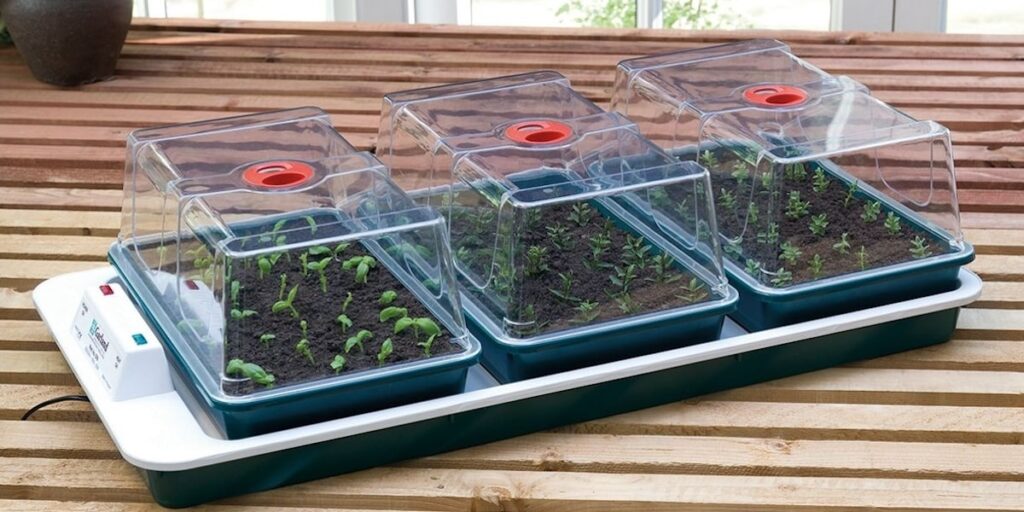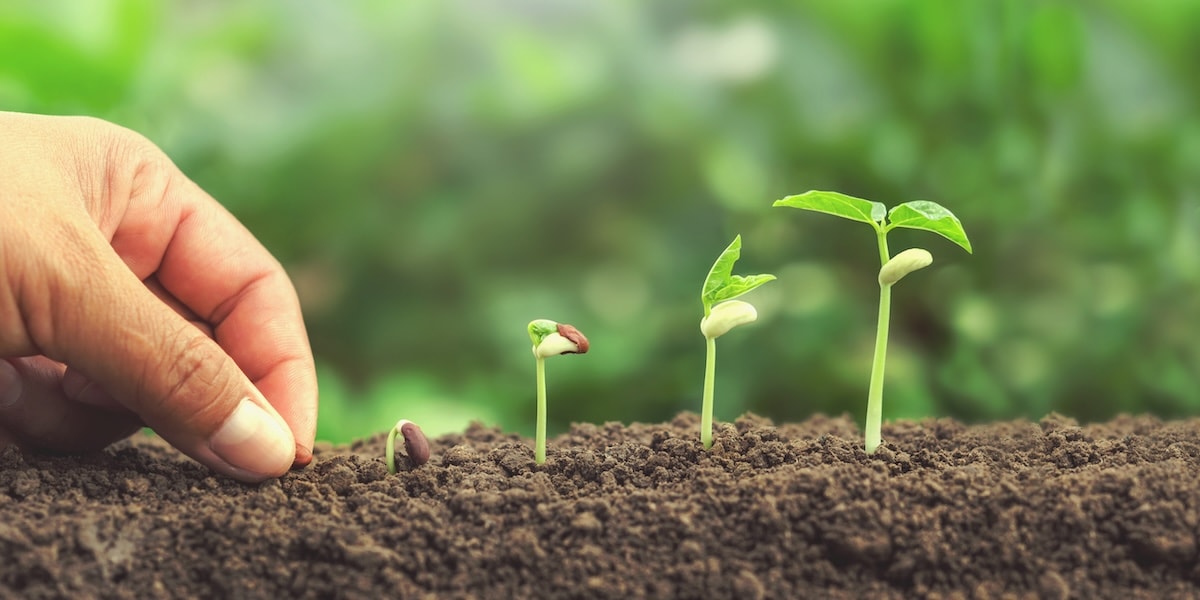Starting your own plants, flowers and vegetables from seed can be incredibly rewarding, but it can also be frustrating when things don’t go as planned. Here are some common seed sowing issues and tips on how to overcome them.
In the meantime, check out our new flower seeds and fill your garden with excellent value colour, scent and interest.
Seeds not germinating?

Image: Big 3 Electric Propagator from Dobies
There are several reasons why seeds might not germinate. You need to get the right balance of light, water, heat, and oxygen for successful germination, but if they don’t burst into life as expected, here are some of the most common problems…
Temperature issues
Each type of seed has an ideal germination temperature, which you can find on your Dobies seed packet. Temperature variations can hinder germination. A soil thermometer can help you monitor these conditions.
- Indoors: Most seeds will germinate at temperatures between 13-21°C. A sunny windowsill or a heated propagator usually provides the right conditions. Once seedlings appear, move them to a cooler spot.
- Outdoors: Follow the recommended sowing times on your seed packet but remember these can vary by up to a month, depending on where you live. Cloches can help warm the soil for early sowings. Avoid sowing in cold, wet soil as this can cause seeds to rot.
Moisture levels
Seeds need the right amount of moisture to germinate. Too little water and they’ll fail to sprout; too much and they may rot.
- Indoors: when sowing in seed trays, pre-water your compost and let it drain before sowing. Cover your seeds with clear plastic to retain moisture. If the surface dries out, stand the tray in water until the surface is moist, then let it drain. Remove the plastic once seeds germinate to prevent rotting.
- Outdoors: improve your soil with organic matter like well-rotted manure or compost. This enhances drainage in wet soils and helps retain moisture in dry soils.
Planting depth
The depth at which you plant seeds is crucial. Follow the guidelines on your seed packet. If there are no instructions, the size of your seeds are a good guide:
- Very small seeds like lettuce and begonia: lightly cover with sieved compost or vermiculite.
- Larger seeds like sunflowers and beans: plant several centimetres deep.
- General rule: plant seeds at a depth of 3 to 4 times their width.
Pest problems
Mice and birds often see outdoor-sown seeds as a treat, especially larger ones like sunflowers, peas, and beans. Protect your seeds by covering them with netting or cloches. Check frequently to ensure wildlife isn’t trapped.
Special requirements
Some seeds need special treatment before sowing, such as chilling, chipping, scarifying, or soaking. Always check your seed packet for specific instructions.
Expired seeds
All seeds come with a ‘sow by’ date. Using seeds past this date increases the risk of failure. For best results, use fresh seeds each year.
Seedlings not thriving?

Image: Garden Grow Fibre Grow Pots from Dobies (©Thompson & Morgan)
After your seeds have germinated, it’s important to transfer them into individual pots to give each plant the space, light and nutrients it needs. Here are some of the most common pitfalls and how to avoid them…
Getting the transfer timing wrong
- Too Early: Wait until seedlings have their first true leaves (the second set after the seed leaves). If roots are tiny, give them a few more days to grow.
- Too Late: Delaying can lead to overcrowding and competition for light and nutrients. Fast-growing plants like tomatoes can become weak and leggy if left too long.
When handling seedlings, use a dibber to gently lift them and hold them by their cotyledons (seed leaves). This ensures that the delicate stems don’t get damaged.
Seedlings dying
Damping off is a common issue where seedlings die or rot at the base, often due to fungal infections in wet soil. Prevent this with these tips:
- Use fresh compost, rather than leftovers from last year
- Clean and disinfect pots and seed trays before use
- Let compost dry out slightly between waterings
- Water with clean tap water
- Make sure there is good air circulation around your plants
Leggy seedlings
Seedlings can become tall and leggy if they don’t get enough light or are too warm. Place them on a bright windowsill but avoid direct, strong sunlight which can scorch them.
Transplant shock
Young plants can be damaged or killed by sudden changes in weather, so harden off indoor-grown plants before moving them outside. This means:
- Placing them in a sheltered outdoor spot during the day
- Bringing them back inside at night
- Repeating this for 7-10 days, after which they should be ready to stay outside
With these tips, you’ll be better prepared to tackle common seed starting problems. Need some help on the best time to start your seeds? See our vegetable sowing chart for healthy crops and our advice on which flower seeds to sow each month for a vibrant display.
Lead image: Shutterstock

